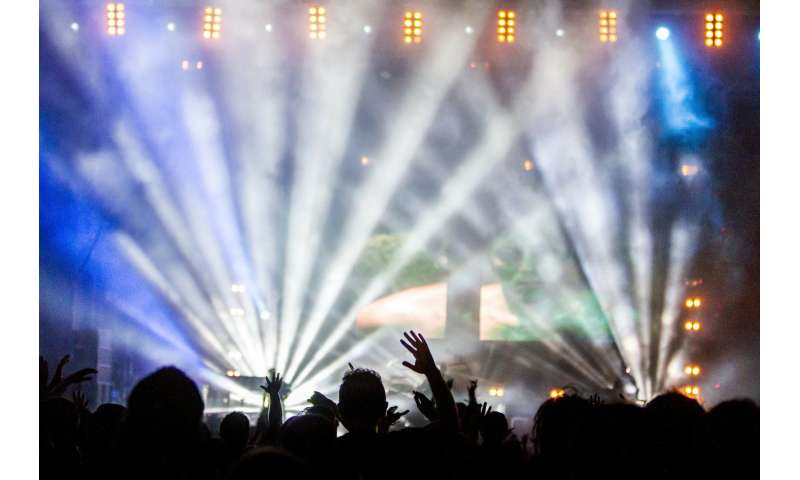Study finds partygoers turn to virtual raves and happy hours during pandemic


People have traded in nightclubs and dance festivals for virtual raves and Zoom happy hours as a result of lockdowns during the COVID-19 pandemic—yet, many are using drugs in these socially distanced settings, according to a new study by researchers at NYU Grossman School of Medicine and the Center for Drug Use and HIV/HCV Research at NYU School of Global Public Health.
The study, published in the International Journal of Drug Policy, is the first to examine drug use during virtual raves and happy hours.
“We explored whether stay-at-home orders changed how people use drugs—and it appears that drug use during virtual gatherings is somewhat prevalent among the party-going population we studied,” said Joseph Palamar, Ph.D., MPH, an associate professor of population health at NYU Langone, an affiliated researcher with the Center for Drug Use and HIV/HCV Research at NYU School of Global Public Health, and the study’s lead author.
With government regulations to curb the spread of COVID-19 temporarily closing nightclubs and canceling large electronic dance music (EDM) festivals, some forms of nightlife have shifted to online platforms. At virtual raves, attendees experience live DJ performances broadcasted to thousands or even millions of people. For instance, Electric Daisy Carnival, the largest EDM festival in the U.S., held a virtual rave-a-thon featuring many popular DJs in May. Virtual happy hours are social gatherings at which alcohol may or may not be consumed, hosted using video conferencing platforms.
While nightlife settings are often associated with drug use, not much is known about whether drugs are also used in these newer virtual settings. To investigate, the NYU researchers conducted online surveys in April and May 2020 with 128 people who live in New York, attend EDM parties and reported recent drug use.
The researchers found that virtual raves and virtual happy hours are popular among these EDM partygoers: 55.5 percent of those surveyed attended virtual raves and 69.5 percent attended virtual happy hours during COVID-19 social distancing. Of those who participated in these virtual events, more than a third reported using illegal drugs during them, including 40.8 percent of virtual rave attendees and 33.7 percent of virtual happy hour attendees.
Alcohol was used by the majority of participants (70 percent) during both types of events, followed by marijuana, which was used by nearly 30 percent of participants. Other drugs were less prevalent: for virtual raves, the use of ecstasy, also known as MDMA and Molly (8.5 percent), LSD (7 percent), and cocaine (4.2 percent) were reported, while some virtual happy hour attendees used cocaine (3.4 percent) and ketamine (3.4 percent).
While drug prevention and harm reduction efforts have typically focused on clubs and parties, the researchers cite virtual events as an opportunity for outreach and education, given that substance use is also occurring in these settings.
“Although drug use may be considered ‘safer’ in a home environment, it may also introduce different risks, such as using alone,” said Palamar. “My main concern is potential adverse social effects of using drugs on camera because this could compromise one’s career. This applies to use of weed as well, because this can still compromise one’s relationship with an employer, even in 2020.”
Palamar notes that the rise of virtual raves and happy hours only tell one part of the story about how substance use has shifted during the pandemic.
Source: Read Full Article